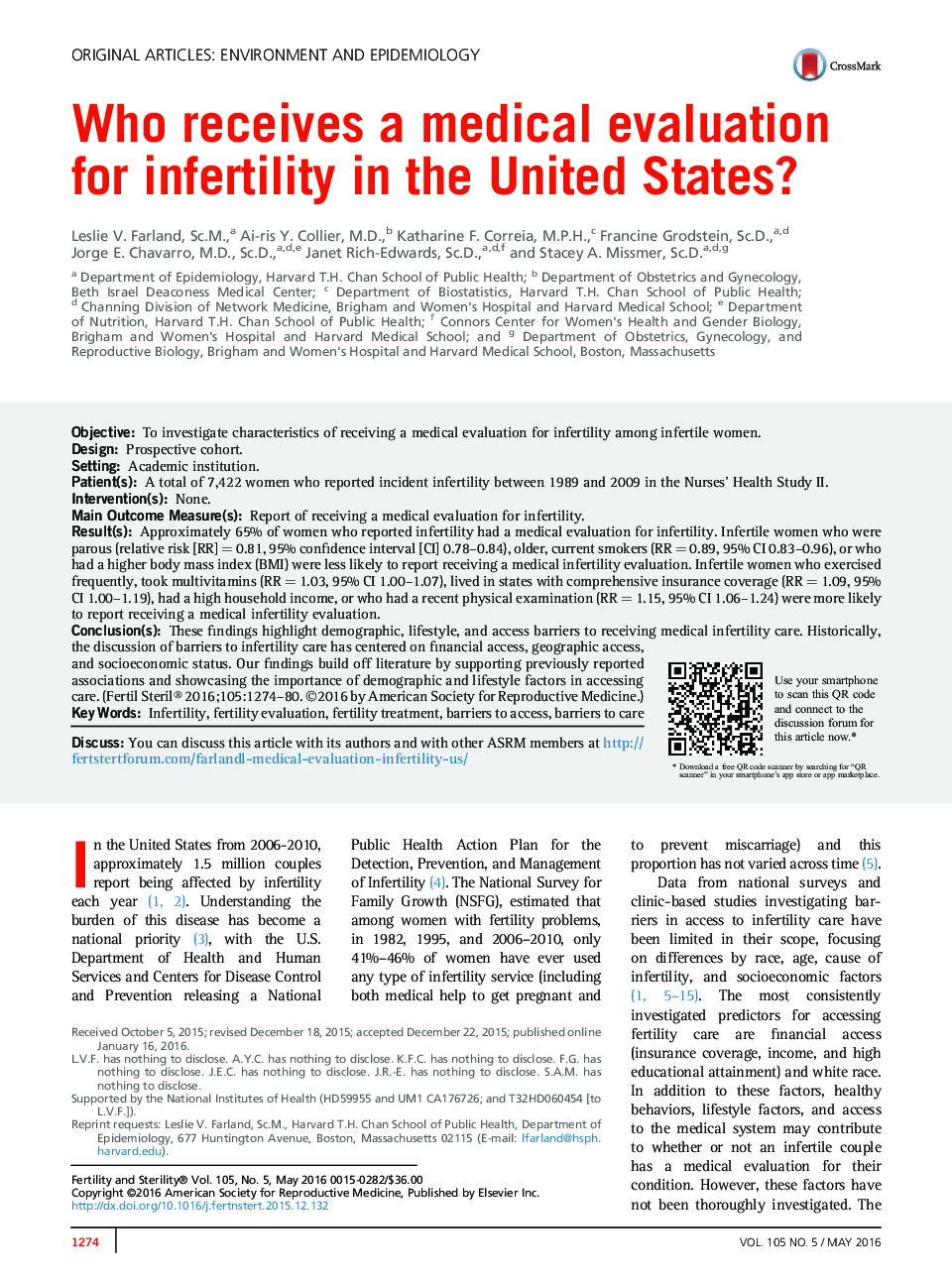| Article ID | Journal | Published Year | Pages | File Type |
|---|---|---|---|---|
| 6178483 | Fertility and Sterility | 2016 | 7 Pages |
ObjectiveTo investigate characteristics of receiving a medical evaluation for infertility among infertile women.DesignProspective cohort.SettingAcademic institution.Patient(s)A total of 7,422 women who reported incident infertility between 1989 and 2009 in the Nurses' Health Study II.Intervention(s)None.Main Outcome Measure(s)Report of receiving a medical evaluation for infertility.Result(s)Approximately 65% of women who reported infertility had a medical evaluation for infertility. Infertile women who were parous (relative risk [RR] = 0.81, 95% confidence interval [CI] 0.78-0.84), older, current smokers (RR = 0.89, 95% CI 0.83-0.96), or who had a higher body mass index (BMI) were less likely to report receiving a medical infertility evaluation. Infertile women who exercised frequently, took multivitamins (RR = 1.03, 95% CI 1.00-1.07), lived in states with comprehensive insurance coverage (RR = 1.09, 95% CI 1.00-1.19), had a high household income, or who had a recent physical examination (RR = 1.15, 95% CI 1.06-1.24) were more likely to report receiving a medical infertility evaluation.Conclusion(s)These findings highlight demographic, lifestyle, and access barriers to receiving medical infertility care. Historically, the discussion of barriers to infertility care has centered on financial access, geographic access, and socioeconomic status. Our findings build off literature by supporting previously reported associations and showcasing the importance of demographic and lifestyle factors in accessing care.
